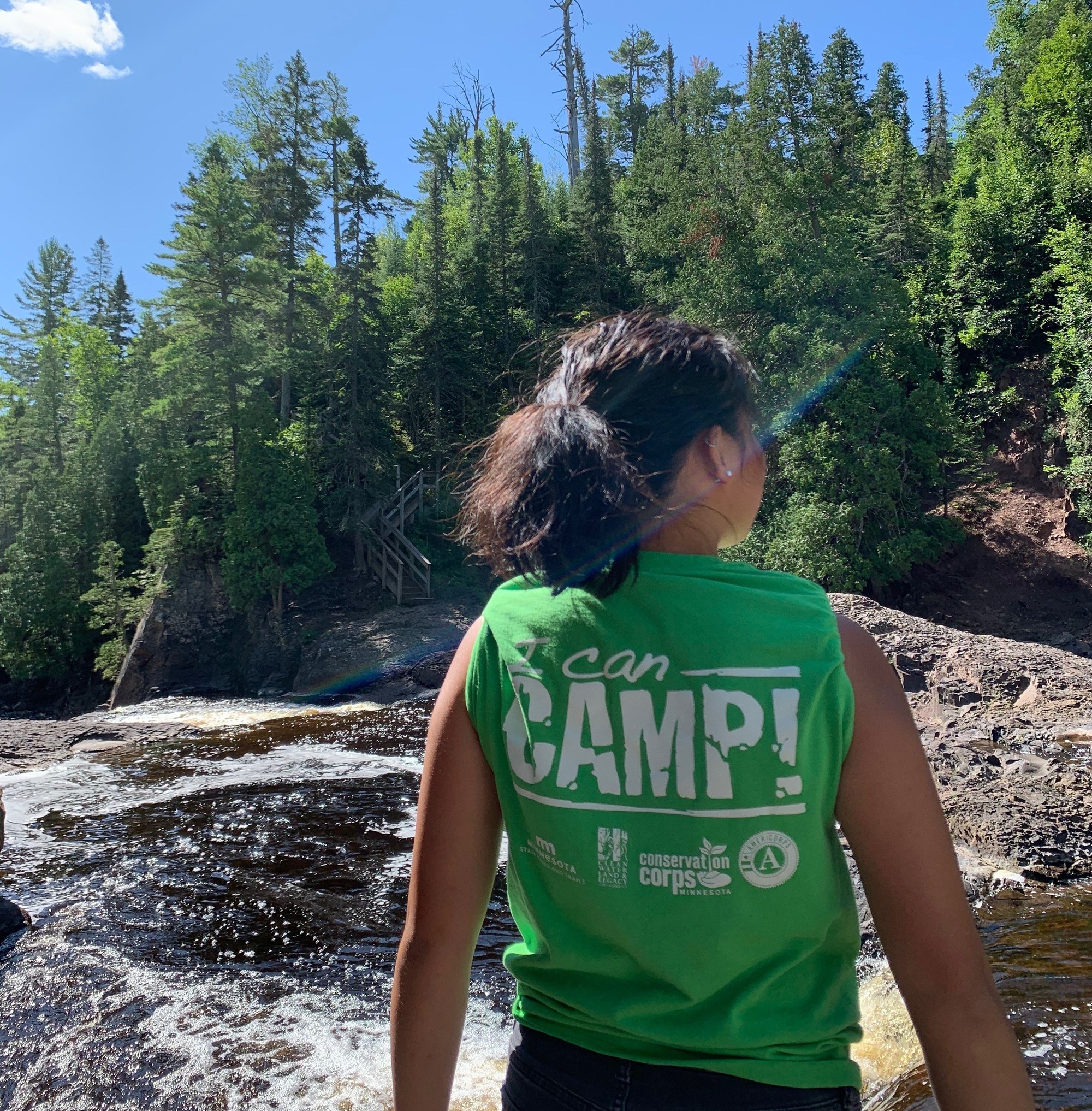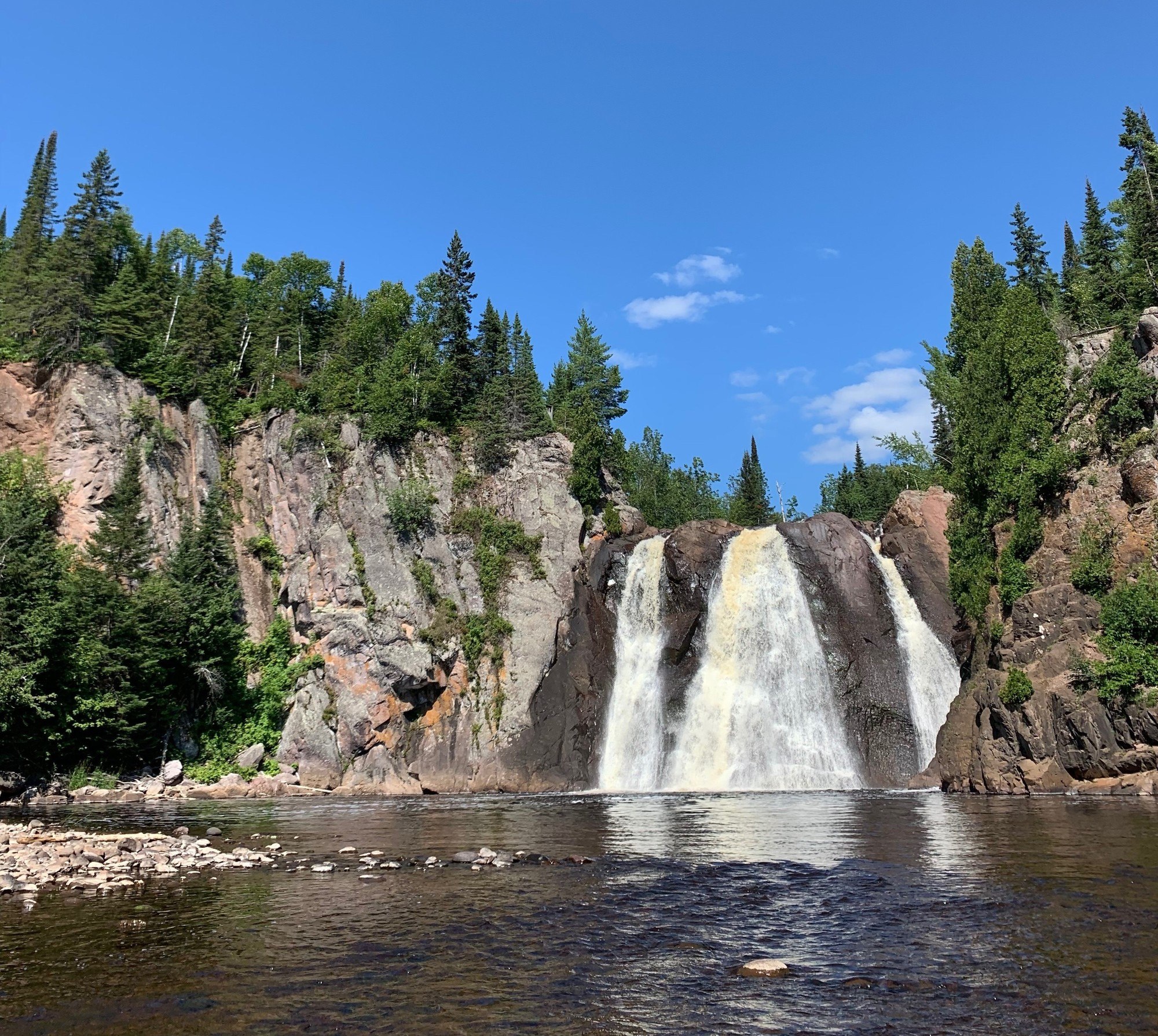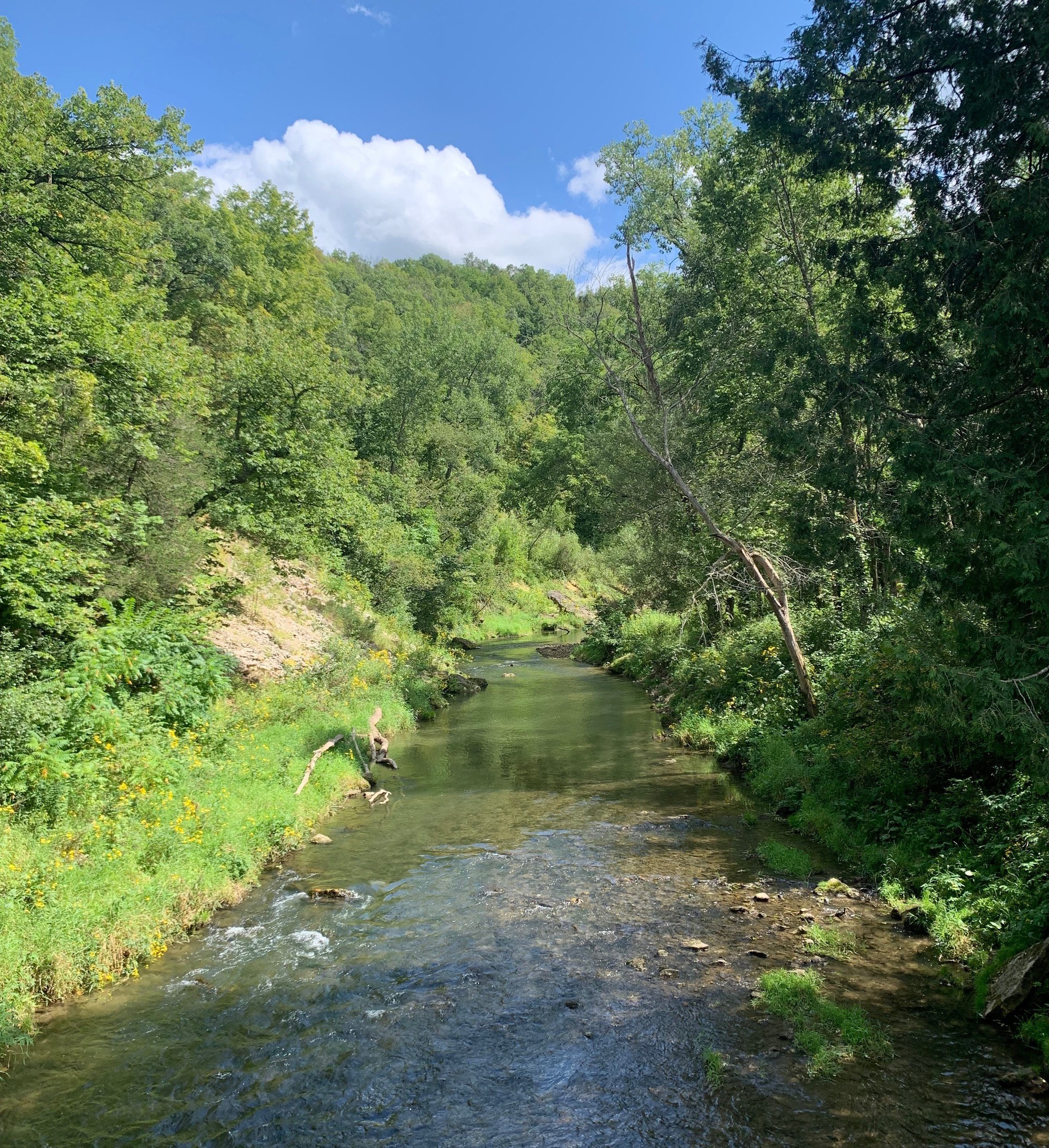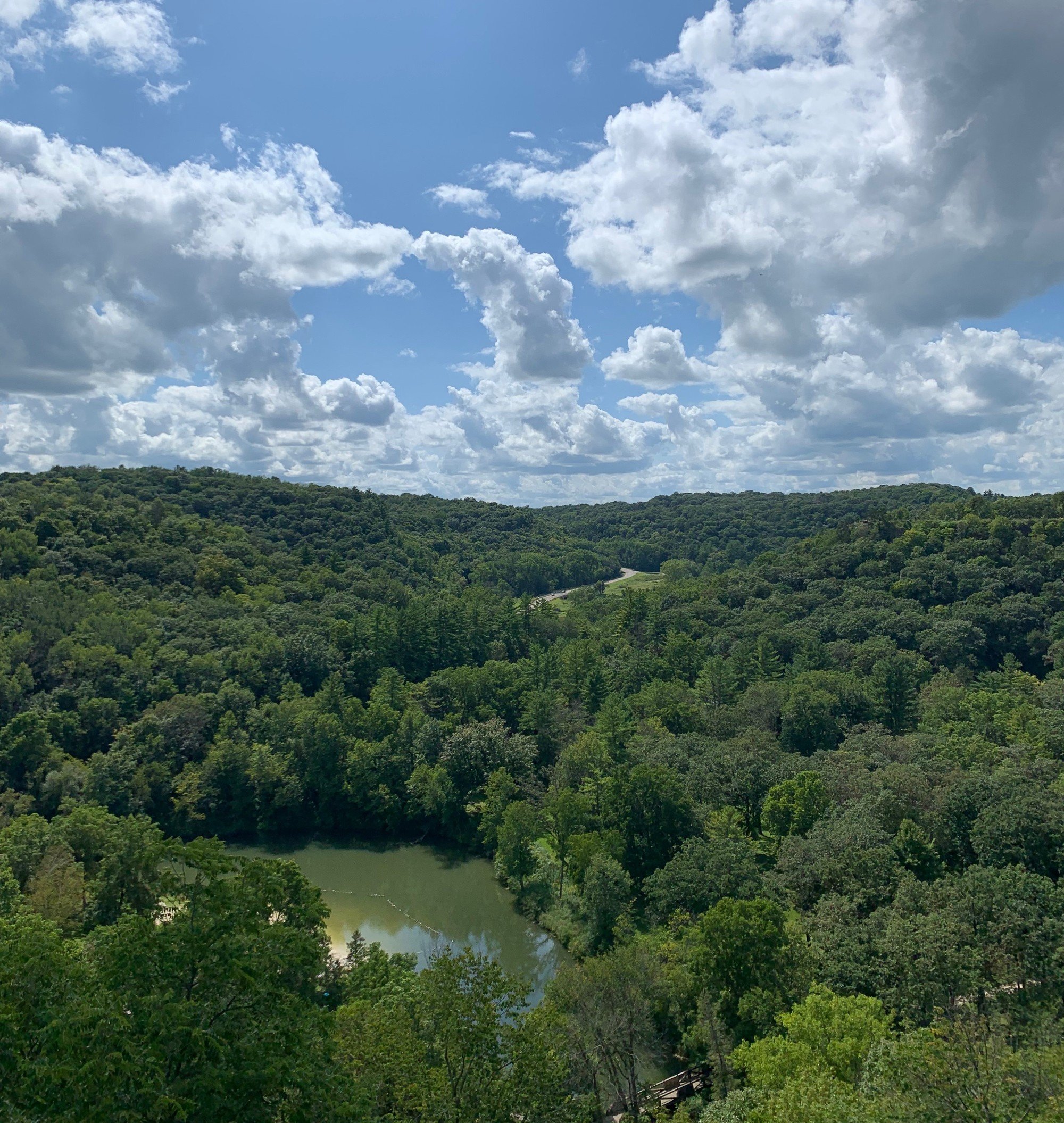Bringing people to the parks

By Kaia Bierman, urban outreach specialist/ AmeriCorps member with MN DNR Parks and Trails through Conservation Corps’ Individual Placement program

Kaia in Chimney Rock

I Can Camp! instructor a the the top of Two Step Falls
The Minnesota Department of Natural Resources strives to integrate a healthy environment, a sustainable economy, and livable communities. The Clean Water, Land, and Legacy Amendment is the manifestation of this mission and Minnesotan’s willingness to protect natural resources and public lands for future use. In 2008 Minnesotans voted in favor of a three-eighths of one percent tax increase through 2034 that would be directed to projects that would sustain environmental quality, the arts, and cultural heritage. However, these measures of environmental protection are only successful so long as the public maintains its support.
The average age of the dominant user group of the State Park system is trending older each year, indicating younger generations are not as engaged with public lands. One of the Legacy funded programs that have emerged to address this is I Can Camp!, a program geared toward families with little to no camping experience. This weekend excursion hosted at various Minnesota State Parks throughout the summer provides the necessary gear and teaches basic camping skills to its participants so that they can gain the confidence to start camping on their own. Instructors provide guided mastery of proper use of equipment, such as setting up tents and operating camp stoves, and how to successfully start a fire. By creating a comfortable and positive outdoor experience, new users are hoped to be gained.
Back in the spring of my term, I was looking ahead to ways I could expand my reach and experience. While I’m generally bringing the parks to the people in my role, I wanted to experience bringing the people to the parks. I joined this year’s crew of Conservation Corps I Can Camp! Instructors at their spring training as a substitute.
I substituted for two programs, one at Tettegouche State Park, located along the North Shore, and the other at Whitewater State Park in southeastern Minnesota’s bluff country. They differ from each other in their geologic history and biome but are both fantastic sites that leave you in awe with their landscapes. When these two state parks are put side by side, I am reminded of how truly rich and environmentally diverse Minnesota is.

High Falls
Tettegouche State Park sits along Lake Superior, offering notable scenic outlooks, such as Shovel Point and Palisade Head which tower right above the Great Lake’s edge. The Superior Hiking Trail, the 310-mile long trail that meanders along the North Shore, passes through this park and offers several vantage points of its own. You can hike along the Baptism River, for spectacular sights from its two waterfalls, High Falls and Two Step, before it flows into Lake Superior.
Whitewater is home to limestone bluffs, which offers some rugged trails to traverse. One attraction on one of the more challenging trails is found on the east end of the park. Chimney Rock is a rock column worn away from the inside, inviting you to crawl inside. Even if the rugged terrain doesn’t suit one’s preferences, Whitewater also contains a peaceful swimming beach with a sandy edge, tucked in between the looming bluffs. There is also the leisurely Meadow Trail that follows 1 mile along the Whitewater River.
The I Can Camp! program creates an avenue to directly connect the public to our treasured public lands. What’s most important here is that it makes it possible for a newer audience to immerse in the outdoors, increasing the pool of people who are connected to our natural world and want to see it protected. I am thankful not only for the opportunity to have served in another Conservation Corps position, but also to have seen the firsthand experience of families immersing in the outdoors and falling in love with what it has to offer.

Whitewater River

Whitewater State Park view from Chimney Rock Trail